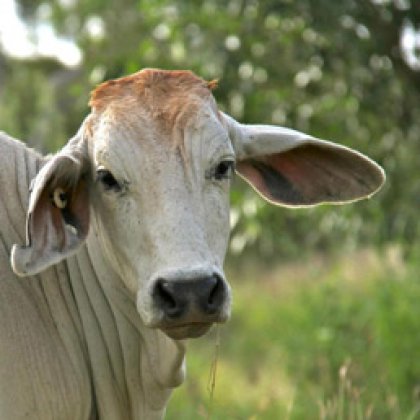
UQ scientists are pressing ahead with development of two advanced vaccines that stand to save the Queensland cattle industry more than $340 million a year.
Dr Neena Mitter is a Senior Research Fellow at the Queensland Alliance for Agriculture and Food Innovation (QAAFI).
Along with partners at the Australian Institute for Bioengineering and Nanotechnology (AIBN) she will lead an international team using nanotechnology to deliver a powerful new vaccine.
This is expected to slash the incidence of three bovine diseases which cost Australian producers more than $200 million annually.
Meanwhile her QAAFI colleague, Senior Research Fellow Dr Tim Mahony heads another team working on a polymer-based solution to combat cattle tick infestation, which costs the Queensland cattle industry an estimated $140 million a year.
Both approaches are on the scientific frontline and considered to be among the “next generation” of animal health solutions.
Dr Mitter’s $3.8 million nano-vaccine project is the culmination of several years’ research by her and AIBN scientists, Queensland Government scientists, Washington State University and Pfizer Animal Health Australia.
She said the “blue sky” aim of the research was to create a new scientific paradigm, delivering immunity to more than one disease in a single formulation.
“The aim is to demonstrate the world's first platform for nano-vaccine delivery for a single dose that’s also stable at room temperature,” Dr Mitter said.
“Our goal is to create a vaccine that will target three major animal-health problems: bovine viral diarrhoea virus (BVDV), bovine ephemeral fever (BEF) and cattle tick fever (Anaplasmosis).”
Collectively these conditions are estimated to cumulatively cost Queensland's $3.4 billion cattle industry about $200 million a year.
“We plan to create a vaccine that doesn’t require any additional agent to be effective,” she said.
“Potential benefits include a major reduction in loss-of-income due to disease and in the cost of vaccination.”
Solving the cattle tick problem
Dr Mahony said cattle tick infestation was currently costing the Queensland economy about $146 million a year and his polymer-based anti-tick vaccine would be developed to work with industry practices to ensure greater take-up.
“Industry practices need to be considered when developing vaccines to ensure industry adoption,” he said.
“Most beef industry enterprises can only muster their cattle once or twice a year due to costs and seasonal factors.
“As most cattle vaccines require two or more doses they can be difficult to apply in extensive beef enterprises.”
“A safe and effective single-dose anti-tick vaccine would save the industry more than $140 million a year,” Dr Mahony said.
By exploiting unique delivery platforms in nanotechnology and polymer science – and working closely with collaborators from UQ and the Department of Agriculture, Fisheries and Forestry (DAFF) – QAAFI researchers expect to deliver major benefits for the cattle industry such as:
• Reducing the cost of vaccination through a single dose, annual treatment, and reduced management costs
• Reducing the cost of refrigeration with shelf-stable vaccines; elimination of cold-chain storage (14 per cent of vaccine cost), reduced carbon footprint, increased export potential
• Adding value to Australia’s $3.1 billion export potential through clean green image, improved animal welfare and best-practice adoption
• Maintaining employment for 32,000 workers in the farm sector and creating new jobs through supply chain linkages for continued profitability of Queensland’s regionally based beef sector
• Increasing the manufacturing potential – Queensland based opportunities
• Reduced usage of pesticides and chemicals in primary industries.
Queensland Government scientists have a distinguished record in the development of cattle vaccines.
The Queensland Government has leveraged its previous investment in nanovaccine research with a $1 million grant to move both projects forward.
QAAFI, AIBN and Queensland Government scientists will partner with high-profile collaborators such as Washington State University, Pfizer, the CRC for Polymer Technologies, the University of Melbourne, Swinburne University of Technology and Virbac Australia.
Speaking at BIO 2012 in Boston, Queensland Minister for Science, Information Technology, Innovation and the Arts Ros Bates said the Queensland Government’s science funding would boost Queensland's international science credentials and had the capacity to markedly improve the state's economic, employment and lifestyle prospects.
“This funding will attract international investment to Queensland, providing a much needed shot-in-the-arm to the state's scientific capabilities,” Ms Bates said.
"These projects have all been carefully considered for their practical application and their ability to keep Queensland at the forefront of global research and development."
Contacts
Dr Neena Mitter
Tel: (07) 3346 6513
Dr Tim Mahony
Tel: (07) 3346 6505
QAAFI Communications
Mob: 0417 425 510
.jpg)

